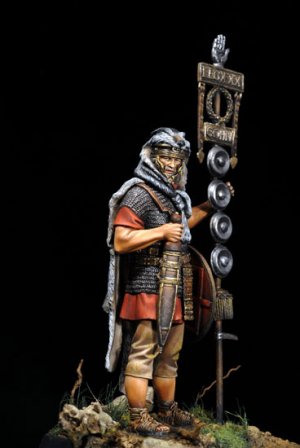
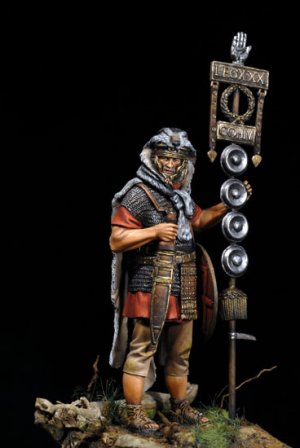
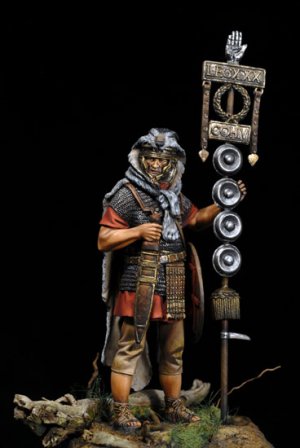
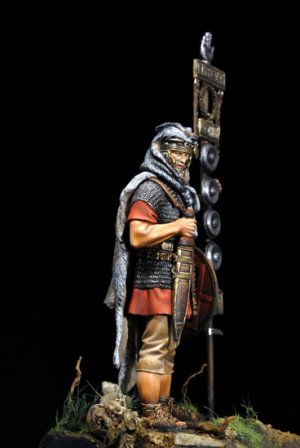
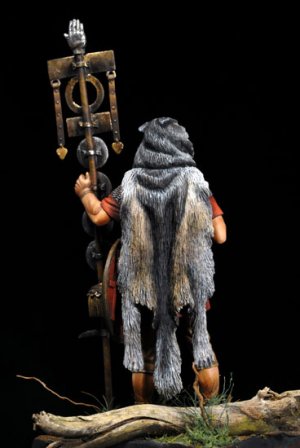
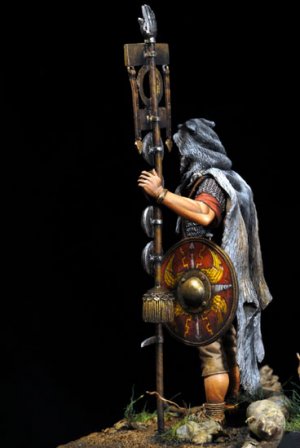






Ref.: ROME-75003

Signifer of the IV Cohort of the XXX Legion “Ulpia” The figurine is a signifier of the IV cohort of the XXX Legion “Ulpia”, stationed in Germany under the empire of Traiano in the first quarter of the second century AD. The standard bearer, the signifer, was chosen from the most valiant legionaries, as the standard bearer certainly had to be the bravest and most exemplary. In the event of defeat he was necessarily destined to sacrifice himself on the field, because a signifer who survived without his standard would most certainly be condemned to death for cowardice. The signifer usually wore an animal hide over his helmet and shoulders, generally wolf, bear or lion, a sign of an ancient tradition going back to a ritual of Indo-European origin (Ver Sacrum), typical of populations of Latin and Sabellic origin. Tradition had it that, in the event of famine, epidemics or overpopulation, groups of young men, at the beginning of spring, would leave their communities to go in search of new lands, under the symbolic guidance of a sacred animal (a bull, wolf, woodpecker, boar or bear), generally represented on a vexillum behind which the emigrants marched. The signifer, covered with an animal hide might have symbolically recalled the role of a guide of a people or an army on the march. The signum was also an instrument used for signalling an order to an entire detachment if it was out of reach of a sonorous signal communicated by voice or horn-blower (cornicen). For example, a halt was indicated by a rapid downward movement of the standard pole, and the lateral pendants may have served the purpose of making the movement more visible. The open hand sy